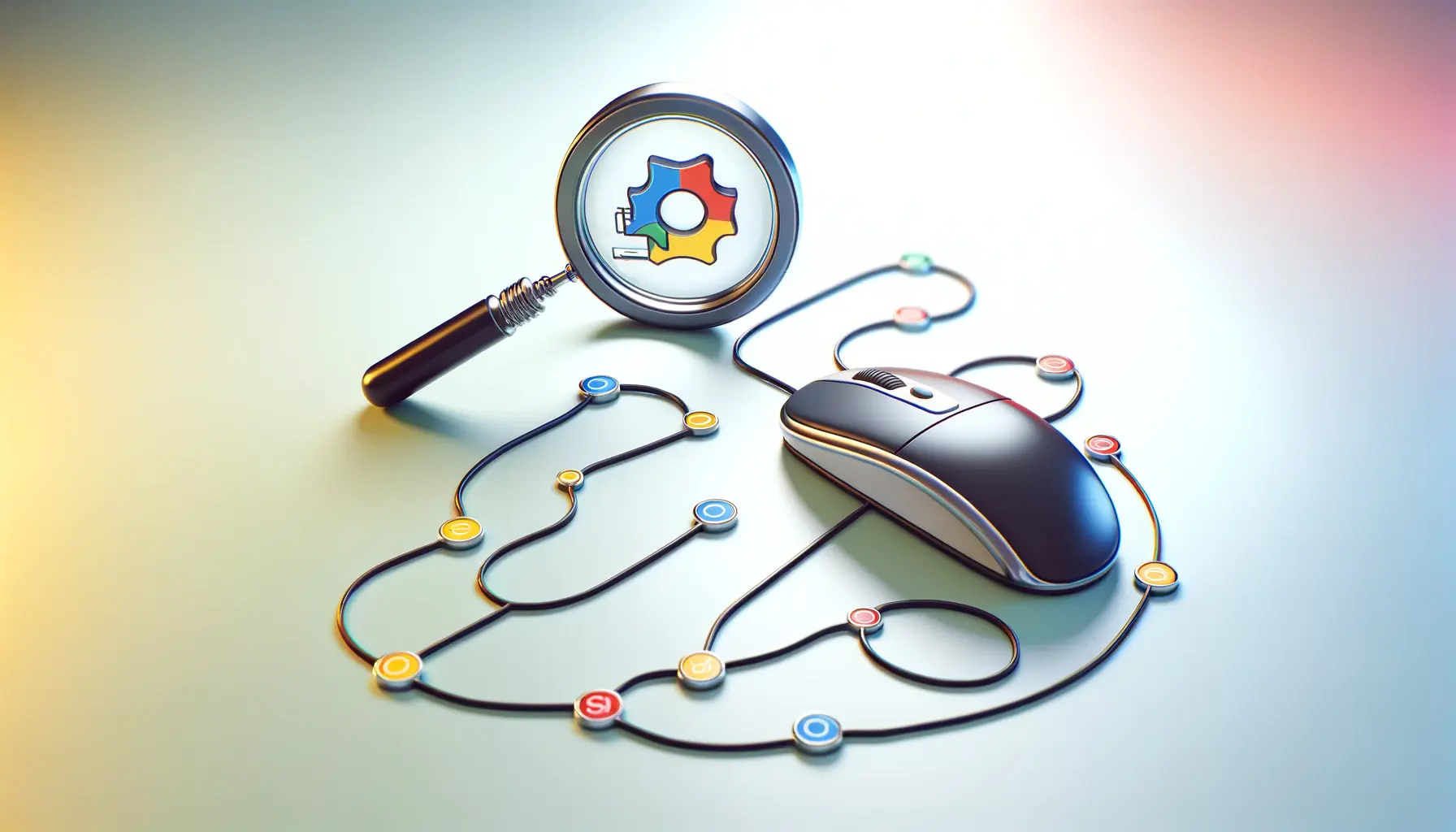Optimizing images for search engine optimization (SEO) is a critical strategy for any ecommerce business aiming to enhance its online visibility and attract more traffic.
In the digital age, where visual content plays a pivotal role in consumer decision-making, understanding and implementing effective image SEO techniques can significantly impact an ecommerce site’s performance.
This article delves into the nuances of image SEO, offering valuable insights and practical tips to optimize images for better search engine rankings and user engagement.
At its core, image SEO encompasses a range of practices designed to make images more discoverable and appealing to search engines.
From selecting the right file formats and sizes to incorporating relevant keywords and alt texts, each aspect of image optimization plays a crucial role in improving a website’s SEO.
By enhancing the visibility of your images, you not only improve your site’s search engine rankings but also provide a richer, more engaging user experience that can drive conversions and sales.
- Understanding the Importance of Image SEO
- Best Practices for Image File Names and Formats
- Mastering Alt Texts and Captions for Enhanced SEO
- Image Compression and Page Load Speed
- Responsive Design and Mobile Optimization
- Utilizing Image Sitemaps for Better Indexing
- Engaging Visual Content: Beyond SEO
- Maximizing Ecommerce Success Through Strategic Image SEO
- Images SEO: Enhancing Visibility in Ecommerce – FAQs
Understanding the Importance of Image SEO
Image SEO is not just about making images search-engine friendly; it’s about enhancing the overall ecommerce experience.
High-quality, well-optimized images can significantly reduce page load times, improve user engagement, and contribute to higher search engine rankings.
In a landscape where speed and user experience are paramount, optimizing your images becomes a necessity rather than an option.
Moreover, with the rise of visual search technologies and platforms, images have become a key entry point for consumers exploring products online.
Optimized images ensure that your products are visible in image search results, increasing the likelihood of attracting potential customers.
This visibility is crucial in driving organic traffic to your ecommerce site and can be a game-changer in a competitive market.
Key Components of Image SEO
Several key components contribute to effective image SEO.
Firstly, choosing the right file format—such as JPEG, PNG, or WebP—can have a significant impact on image quality and page load times.
Secondly, optimizing image file sizes without compromising quality is essential for maintaining fast page speeds and enhancing user experience.
Additionally, incorporating relevant keywords into your image file names, alt texts, and captions can improve discoverability and relevance in search results.
Another critical aspect of image SEO is the structure and accessibility of your images.
Ensuring that images are properly indexed by search engines through the use of image sitemaps and structured data can further enhance visibility.
Lastly, responsive image design ensures that your images are optimized for all devices, providing a seamless experience for mobile users and contributing to better mobile SEO performance.
Optimizing images for SEO is a multifaceted process that involves technical, aesthetic, and strategic considerations. By focusing on these key components, ecommerce businesses can significantly enhance their online visibility and user engagement.
Best Practices for Image File Names and Formats
Choosing the right file names and formats for your images is a foundational step in image SEO.
This not only aids in better indexing by search engines but also contributes to the overall optimization of your ecommerce site.
Let’s explore some best practices that can make a significant difference.
Optimizing Image File Names
When it comes to file names, clarity and relevance are key.
A descriptive file name helps search engines understand and categorize your images effectively, which can boost your visibility in search results.
Here are some tips for optimizing your image file names:
- Use descriptive keywords: Incorporate relevant keywords that accurately describe the image. This improves SEO and helps your images appear in relevant searches.
- Avoid generic names: Names like “IMG_001.jpg” offer no value to search engines or users. Choose names that reflect the image content, such as “blue-summer-dress.jpg”.
- Use hyphens to separate words: Search engines read hyphens as spaces. Avoid using underscores or spaces, as they can complicate URL structures.
Selecting the Right Image Format
The format of your images can significantly impact their quality and load times.
Here’s a brief guide to choosing the most suitable image formats for your ecommerce site:
- JPEG: Ideal for photographs and images with gradients. JPEGs offer a good balance between quality and file size, making them suitable for most ecommerce images.
- PNG: Best for images requiring transparency or images with text and icons. PNGs provide higher quality but at the cost of larger file sizes.
- WebP: A modern format that provides superior compression and quality characteristics compared to JPEG and PNG. Supported by most browsers, WebP is an excellent choice for ecommerce images.
Employing the right file names and formats is a straightforward yet effective way to enhance your image SEO.
By adhering to these best practices, you can ensure that your images are not only visually appealing but also optimized for search engines, contributing to faster load times and improved user experience.
Remember, the goal of optimizing file names and formats is to make your images more discoverable and to improve the loading speed of your pages, which are critical factors in SEO and user satisfaction.
Mastering Alt Texts and Captions for Enhanced SEO
Alt texts and captions are crucial elements of image SEO, serving not only as accessibility features but also as strategic tools for improving search engine visibility.
Properly utilized, they can significantly enhance the SEO performance of your ecommerce images.
Optimizing Alt Texts
Alt texts (alternative texts) provide a textual description of an image, offering context to search engines and aiding visually impaired users.
Here’s how to optimize them effectively:
- Be descriptive: Clearly describe what the image shows, including relevant keywords without keyword stuffing. For example, “handmade blue ceramic vase” is more effective than just “vase.”
- Keep it concise: Aim for brevity while being informative. Ideally, keep your alt text under 125 characters to ensure it’s fully displayed in search results and accessible to screen readers.
- Avoid redundant phrases: Phrases like “image of” or “picture of” are unnecessary, as screen readers already announce the image element.
Crafting Effective Captions
Captions, though not directly used by search engines for ranking, play a significant role in user engagement.
They provide context and can encourage users to spend more time on your page, indirectly benefiting SEO.
Here’s how to create compelling captions:
- Provide context: Use captions to explain how the image relates to your product or content. This enhances user understanding and engagement.
- Include keywords: Naturally incorporate relevant keywords into your captions to boost your content’s relevance and discoverability.
- Encourage action: Where appropriate, use captions to encourage user action, such as exploring a product feature or viewing related content.
Alt texts and captions are more than just SEO tools; they enhance the accessibility and user experience of your ecommerce site.
By optimizing these elements, you not only improve your site’s SEO but also make your content more inclusive and engaging for all users.
Consider alt texts and captions as integral parts of your content strategy. They should align with your overall SEO goals and provide value to your audience, contributing to a richer, more accessible web experience.
Image Compression and Page Load Speed
Image compression plays a pivotal role in optimizing page load speed, a critical factor for both user experience and SEO.
Large, uncompressed images can significantly slow down your website, negatively impacting user engagement and search engine rankings.
Let’s explore how to effectively compress images without sacrificing quality.
Understanding Image Compression
Image compression reduces the file size of your images, which can drastically improve page load times.
There are two main types of image compression to consider:
- Lossy compression: This method reduces file size by permanently removing some image data, which can affect image quality. It’s most effective for web images where a slight loss in quality is acceptable in exchange for faster load times.
- Lossless compression: This method reduces file size without affecting the image’s quality by removing unnecessary metadata. It’s suitable for high-quality images where every detail matters.
Choosing the right compression method depends on your specific needs and the importance of image quality versus load speed for your ecommerce site.
Tools and Techniques for Image Compression
Several tools and techniques can help you compress images effectively:
- Online compression tools: Websites like TinyPNG and JPEGmini offer easy-to-use interfaces for compressing images without needing to download software.
- Image editing software: Programs like Adobe Photoshop provide advanced features for image compression, allowing more control over the balance between quality and file size.
- Content Delivery Networks (CDNs): Some CDNs offer automatic image optimization, compressing images on the fly as they are served to users.
Implementing image compression as part of your image SEO strategy can significantly improve your website’s load times, enhancing user experience and boosting your search engine rankings.
By carefully selecting the appropriate compression method and utilizing the right tools, you can ensure your images are optimized for both speed and quality.
Proper image compression is essential for optimizing your ecommerce site’s performance. It not only improves page load speed but also contributes to a better overall user experience, leading to higher engagement and conversion rates.
Responsive Design and Mobile Optimization
In today’s mobile-first world, ensuring your images are optimized for all devices is crucial for both user experience and SEO.
Responsive design and mobile optimization of images can significantly enhance your ecommerce site’s accessibility, loading times, and visibility on search engines.
Let’s delve into the strategies for achieving optimal performance across all devices.
Implementing Responsive Images
Responsive images adapt to the size of the device’s screen, ensuring that your images look great on both desktop and mobile devices without unnecessarily slowing down the page.
Here are key practices for implementing responsive images:
- Use the
srcsetattribute: This HTML attribute allows you to specify multiple image files for different screen resolutions, enabling browsers to download the most appropriate version based on the device. - Define image sizes: Use the
sizesattribute to specify the display size of the image in different scenarios, helping the browser to select the correct image file. - Adopt modern image formats: Formats like WebP offer superior compression and quality characteristics compared to traditional formats, making them ideal for responsive design.
Optimizing Images for Mobile Devices
With the majority of internet traffic coming from mobile devices, optimizing images for mobile is non-negotiable.
Here’s how to ensure your images are mobile-friendly:
- Compress images: Use aggressive compression techniques to reduce file sizes, as mobile devices often have slower internet connections.
- Test on multiple devices: Regularly test your images on various devices and screen sizes to ensure they load quickly and display correctly.
- Consider the viewport: Ensure images are not larger than the mobile device’s viewport to avoid unnecessary horizontal scrolling.
By focusing on responsive design and mobile optimization, you can ensure that your images contribute positively to your site’s SEO and user experience.
This not only helps in retaining visitors but also in converting them into customers, as a seamless mobile experience is often a key factor in purchase decisions.
Responsive design and mobile optimization are essential for modern ecommerce sites. They not only improve user experience but also contribute to better SEO performance by ensuring your site meets the needs of mobile users.
Utilizing Image Sitemaps for Better Indexing
Image sitemaps are a powerful tool in the SEO toolkit, especially for ecommerce sites with a large inventory of products and images.
They help search engines discover images that might not be found through the usual crawling process, ensuring that all your valuable visual content is indexed and has the chance to appear in search results.
Let’s explore how to create and use image sitemaps effectively.
Creating an Image Sitemap
An image sitemap is an XML sitemap specifically designed for images.
It provides search engines with detailed information about the images on your website, including the URL of the image, its caption, title, geolocation, and license information.
Here’s how to create one:
- Identify all image URLs: Start by compiling a list of URLs for all images you want to include in the sitemap. This can be done manually for smaller sites or programmatically for larger ecommerce platforms.
- Create the XML file: Using the standard sitemap protocol, create an XML file that includes the
<image:image>tag for each image, along with sub-tags for the image’s details. - Submit to search engines: Once your image sitemap is created, submit it to search engines like Google through their respective webmaster tools to ensure it’s crawled and indexed.
Benefits of Image Sitemaps
Image sitemaps offer several benefits that can enhance your ecommerce site’s SEO performance:
- Improved image discovery: By providing direct links to your images, sitemaps make it easier for search engines to find and index them, increasing the chances that they’ll appear in search results.
- Richer image data: The additional metadata you can include in an image sitemap (such as captions and titles) can help improve the relevance and ranking of your images in search results.
- Increased traffic: Well-indexed images have a better chance of appearing in image searches, driving additional traffic to your site from users interested in your products.
Implementing an image sitemap is a straightforward yet effective way to boost your ecommerce site’s visibility and ensure that your images are working hard to attract potential customers.
With the right approach, you can significantly improve the indexing and ranking of your images, contributing to your overall SEO strategy.
Image sitemaps are an essential component of a comprehensive SEO strategy, particularly for ecommerce sites with a significant number of product images. They ensure better indexing and visibility of your images, leading to increased traffic and potential sales.
Engaging Visual Content: Beyond SEO
While optimizing images for SEO is crucial, the ultimate goal of your ecommerce site’s visual content should be to engage and convert visitors.
High-quality, compelling images not only improve your site’s SEO but also enhance the shopping experience, build brand trust, and influence buyer decisions.
Let’s delve into strategies for creating visual content that captivates beyond just SEO.
Crafting High-Quality Product Images
The quality of your product images directly impacts user engagement and conversion rates.
Here are tips for creating high-quality visuals:
- Invest in professional photography: High-resolution, professionally shot images convey the value and quality of your products, encouraging users to explore further and make a purchase.
- Show products in use: Lifestyle images that show products being used or worn can help users visualize the product in their own lives, increasing the likelihood of conversion.
- Provide multiple angles: Offering multiple views and close-ups of products allows users to gain a comprehensive understanding of what they’re buying, reducing uncertainty and increasing satisfaction.
Leveraging User-Generated Content
User-generated content (UGC), such as customer reviews and photos, can significantly enhance trust and engagement on your ecommerce site:
- Encourage customer reviews with photos: Reviews featuring customer photos add authenticity and can influence buying decisions by providing real-life examples of your products.
- Feature UGC in your marketing: Incorporating user-generated photos in your marketing materials and on product pages can create a sense of community and encourage more customers to share their experiences.
Utilizing Videos and Interactive Media
Videos and interactive media offer dynamic ways to showcase your products and engage users:
- Product videos: Videos that demonstrate product features, usage, or unboxing experiences can provide valuable information and entertainment, enhancing user engagement.
- 360-degree views: Interactive 360-degree images or videos allow users to explore products from every angle, offering an immersive online shopping experience.
By focusing on creating engaging visual content, you can transcend the basics of image SEO and cultivate a rich, interactive online shopping environment.
This approach not only boosts your SEO efforts but also drives conversions, builds brand loyalty, and sets your ecommerce site apart in a crowded marketplace.
Engaging visual content is the cornerstone of a successful ecommerce site. Beyond optimizing for SEO, focus on creating images, videos, and interactive media that captivate your audience, enhance the user experience, and ultimately drive sales.
Maximizing Ecommerce Success Through Strategic Image SEO
In the competitive landscape of ecommerce, optimizing images for SEO is not just a technical necessity but a strategic advantage.
This comprehensive guide has traversed the multifaceted approach to enhancing visibility and engagement through effective image SEO practices.
As we’ve explored, the journey to optimizing your ecommerce images encompasses a broad spectrum of techniques, from selecting the right file names and formats to implementing responsive design and leveraging image sitemaps for better indexing.
The Synergy of SEO and User Experience
At the heart of effective image SEO lies the dual goal of improving search engine visibility and enriching the user experience.
High-quality, well-optimized images serve as a bridge between potential customers and your products, making them not only discoverable but also desirable.
The strategic incorporation of keywords, alt texts, and captions, coupled with the technical optimization of file sizes and formats, ensures that your images contribute positively to your site’s SEO while fostering an engaging shopping environment.
Engagement Beyond Optimization
However, the essence of image SEO transcends technical optimization, venturing into the realm of creating compelling visual narratives that captivate and convert.
The integration of professional product photography, user-generated content, and dynamic media like videos and interactive views elevates the ecommerce experience, transforming passive browsers into active buyers.
This holistic approach to image SEO underscores the importance of not only meeting the technical requirements of search engines but also the emotional and informational needs of consumers.
- Investing in high-quality, professional imagery that showcases your products in the best light.
- Encouraging and incorporating user-generated content to build trust and authenticity.
- Utilizing modern technologies like videos and 360-degree views to provide immersive product experiences.
In conclusion, mastering image SEO is a critical component of a successful ecommerce strategy.
By embracing a comprehensive approach that balances technical optimization with engaging content creation, ecommerce businesses can significantly enhance their online visibility, user engagement, and ultimately, sales.
As the digital marketplace continues to evolve, the ability to effectively optimize and leverage images will remain a key differentiator in the crowded ecommerce landscape.
Want your website to top Google search rankings? Leave the SEO to our professional agency!
Images SEO: Enhancing Visibility in Ecommerce – FAQs
Explore common queries about optimizing images for ecommerce platforms and how it impacts SEO and user engagement.
JPEG is ideal for most ecommerce images due to its balance between quality and file size, making it perfect for fast-loading web pages.
Image compression significantly improves page load times, a key factor for SEO ranking and enhancing user experience on ecommerce sites.
Yes, descriptive alt texts help search engines understand your images, improving visibility in search results and accessibility for users.
Responsive images ensure optimal display across all devices, crucial for mobile users and positively impacting SEO by improving user experience.
Optimized images load faster, reducing bounce rates and improving SEO rankings by providing a better experience for ecommerce shoppers.
Image sitemaps facilitate better indexing of images by search engines, enhancing visibility in image search results and driving traffic to your site.
User-generated content, like customer photos, adds authenticity and can improve SEO by increasing engagement and providing fresh, relevant content.
Videos and interactive media can significantly enhance user engagement, indirectly benefiting SEO by increasing the time spent on your ecommerce site.










